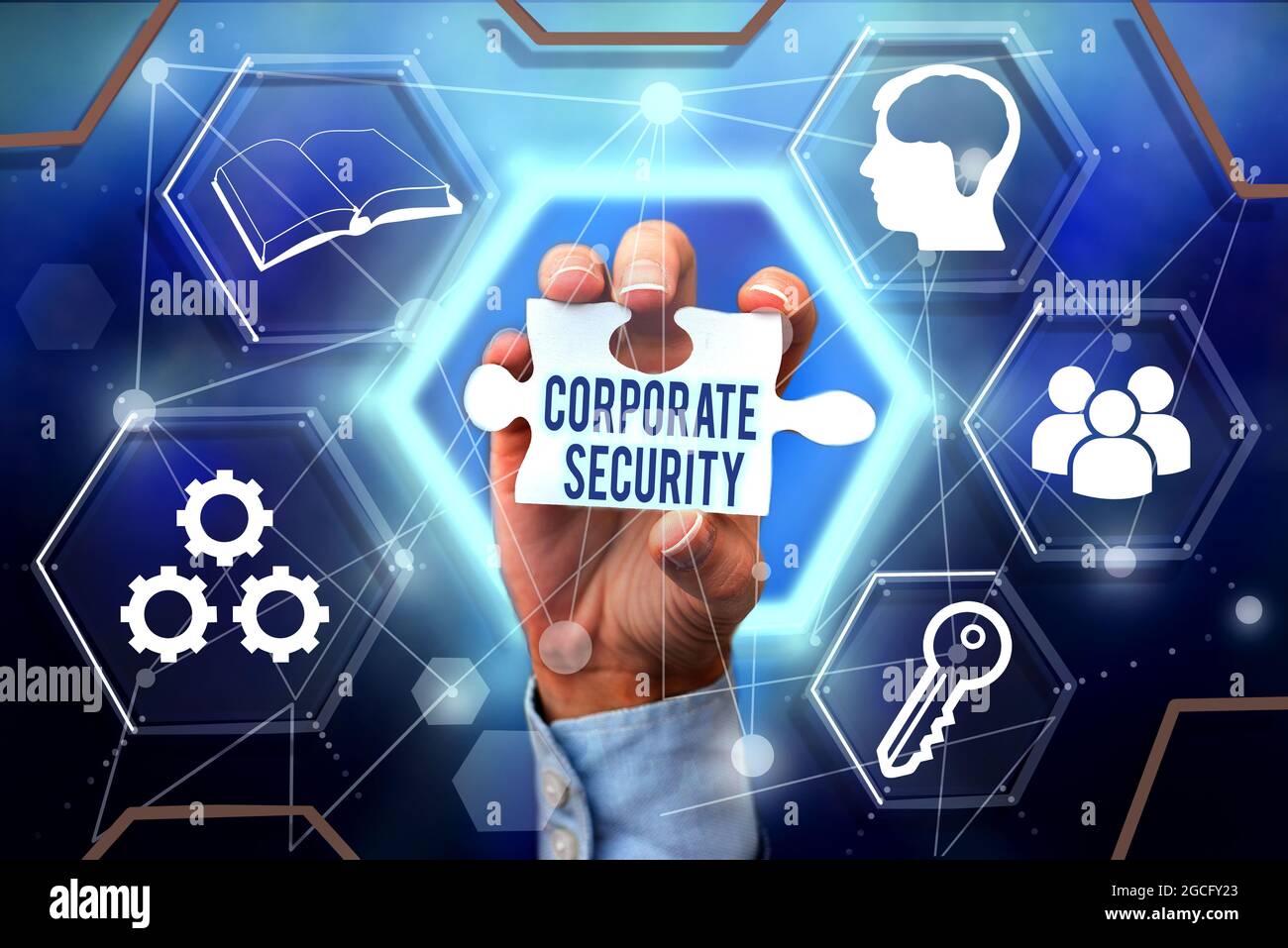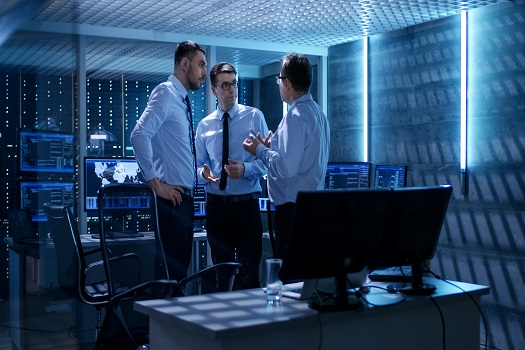From Cybersecurity to Physical Procedures: Enhancing Business Protection in an Altering World
In today's swiftly evolving digital landscape, the relevance of business safety can not be overemphasized. As cyber threats end up being significantly sophisticated and common, companies need to surpass conventional cybersecurity procedures to guard their assets and operations - corporate security. This is where the combination of physical safety and security measures ends up being vital. By combining the strengths of both cybersecurity and physical security, business can create a comprehensive defense approach that resolves the diverse series of dangers they deal with. In this conversation, we will explore the transforming danger landscape, the need to integrate cybersecurity and physical safety, the implementation of multi-factor authentication steps, the relevance of employee understanding and training, and the adjustment of safety and security measures for remote workforces. By taking a look at these crucial areas, we will gain valuable insights right into exactly how organizations can enhance their corporate safety and security in an ever-changing globe.
Recognizing the Changing Threat Landscape
The developing nature of the modern-day globe requires an extensive understanding of the changing danger landscape for effective business safety and security. In today's interconnected and electronic age, threats to company security have come to be extra complex and sophisticated. As modern technology developments and services become progressively dependent on digital framework, the capacity for cyberattacks, data violations, and other security violations has actually substantially increased. It is vital for organizations to stay educated and adjust their safety and security gauges to resolve these progressing hazards.
One secret facet of comprehending the changing threat landscape is identifying the various kinds of threats that companies deal with. Furthermore, physical hazards such as theft, vandalism, and business espionage remain common concerns for organizations.
Tracking and evaluating the danger landscape is vital in order to identify prospective threats and vulnerabilities. This involves staying updated on the most recent cybersecurity patterns, evaluating risk intelligence records, and performing regular danger evaluations. By comprehending the altering risk landscape, companies can proactively execute suitable safety actions to minimize threats and safeguard their possessions, online reputation, and stakeholders.
Integrating Cybersecurity and Physical Security
Integrating cybersecurity and physical safety is critical for thorough corporate protection in today's digital and interconnected landscape. As organizations significantly rely upon modern technology and interconnected systems, the borders in between physical and cyber dangers are coming to be blurred. To effectively protect versus these dangers, an alternative method that incorporates both cybersecurity and physical safety steps is crucial.
Cybersecurity concentrates on securing digital properties, such as networks, systems, and data, from unapproved access, interruption, and burglary. Physical security, on the other hand, encompasses steps to secure physical possessions, individuals, and facilities from vulnerabilities and threats. By integrating these two domain names, organizations can address susceptabilities and threats from both physical and electronic angles, therefore improving their general protection stance.
The integration of these two self-controls permits an extra comprehensive understanding of safety risks and enables a unified reaction to incidents. Physical access controls can be boosted by integrating them with cybersecurity procedures, such as two-factor authentication or biometric recognition. Similarly, cybersecurity measures can be enhanced by physical safety and security actions, such as surveillance video cameras, alarm systems, and protected access points.

Carrying Out Multi-Factor Authentication Actions
As organizations significantly focus on thorough security procedures, one reliable technique is the application of multi-factor authentication steps. Multi-factor verification (MFA) is a security technique that requires users to company website give several forms of identification to access a system or application. This method includes an extra layer of protection by incorporating something the individual knows, such as a password, with something they have, like a finger print or a protection token.
By carrying out MFA, organizations can considerably enhance their security pose - corporate security. Standard password-based authentication has its constraints, as passwords can be quickly jeopardized or forgotten. MFA mitigates these threats by including an extra verification element, making it extra challenging for unauthorized individuals to get to delicate info
There are a number of sorts of multi-factor verification approaches available, including biometric authentication, SMS-based verification codes, and hardware tokens. Organizations need to assess their certain needs and select the most ideal MFA option for their demands.
Nevertheless, the application of MFA need to be carefully planned and carried out. It is crucial to strike a balance in between safety and security and usability to avoid user aggravation and resistance. Organizations must additionally think about potential compatibility issues and give appropriate training and assistance to guarantee a smooth shift.
Enhancing Staff Member Recognition and Training
To enhance company safety, organizations must prioritize improving employee awareness and training. Many safety breaches occur due to human mistake or absence of understanding.
Reliable staff member recognition and training programs ought to cover a vast array of subjects, including data protection, phishing assaults, social engineering, password health, and physical security measures. These programs should be tailored to the details needs and responsibilities of various employee duties within the organization. Regular training sessions, simulations, and workshops can assist workers develop the essential abilities and visit the website knowledge to recognize and react to protection dangers effectively.
Furthermore, organizations need to encourage a society of safety and security recognition and offer ongoing updates and pointers to keep staff members notified about the newest threats and mitigation methods. This can be done with inner communication networks, such as e-newsletters, intranet sites, and email campaigns. By cultivating a security-conscious labor force, companies can significantly minimize the chance of security cases and safeguard their beneficial assets from unapproved accessibility or concession.

Adapting Safety Measures for Remote Labor Force
Adapting company safety actions to suit a remote labor force is essential in ensuring the security of delicate details and assets (corporate security). With the increasing trend of remote job, organizations must implement ideal security steps to minimize the dangers related to this brand-new way of functioning
One essential element of adjusting safety measures for remote work is developing protected interaction channels. Encrypted messaging platforms and digital personal networks (VPNs) can help protect delicate details and prevent unapproved access. Furthermore, companies ought to implement using strong passwords and multi-factor verification to improve the security of remote accessibility.
One more crucial factor to consider is the execution of secure remote accessibility options. This involves offering employees with protected access to company sources and information through digital desktop facilities (VDI), remote desktop protocols (RDP), or cloud-based options. These technologies ensure that sensitive info stays secured while making it possible for workers to do their duties effectively.

Last but not least, extensive safety and security recognition training is crucial for remote workers. Training sessions should cover finest techniques for firmly accessing and taking care of sensitive information, determining and reporting phishing efforts, and keeping the general cybersecurity health.
Final Thought
In verdict, as the risk landscape remains to progress, it is critical for companies to strengthen their safety and security determines both in the cyber and physical domains. Integrating cybersecurity and physical security, applying multi-factor authentication steps, and boosting staff member recognition and training are important steps in the direction of accomplishing durable corporate protection. Additionally, adapting safety actions to suit remote labor forces is vital in today's changing globe. By implementing these measures, companies can alleviate risks and shield their useful possessions from potential threats.
In this conversation, we will discover the altering threat landscape, the requirement to integrate cybersecurity and physical safety, the implementation of multi-factor verification steps, the importance of worker recognition and training, and the adaptation of protection steps for remote labor forces. Cybersecurity steps can be enhanced by physical safety and security steps, such as security cams, alarms, and protected access factors.
As organizations significantly prioritize detailed security steps, one reliable approach is the application of multi-factor verification measures.In final thought, as the danger landscape proceeds to evolve, it is vital for organizations to enhance their safety and security gauges both try these out in the cyber and physical domain names. Integrating cybersecurity and physical safety and security, applying multi-factor authentication procedures, and boosting staff member awareness and training are vital actions in the direction of attaining durable company security.